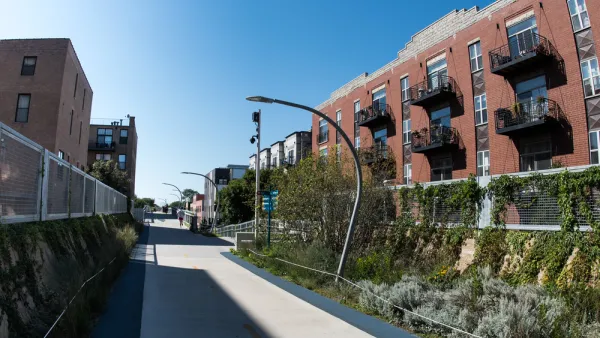Emily Badger discusses a phenomenon of gentrification in Chicago: former single room occupancy hotels, historically reserved for low-income housing, are being converted into market-rate rentals.
In the latest news in the affordability crisis of cities across the United States, Emily Badger of The Washington Post delves into a stark phenomenon in Chicago—the sale and redevelopment of single room occupancy (SRO) hotels into market-rate housing. Under this adaptive reuse business model, the SRO hotel is sold, remodeled to include a private bathroom and kitchens instead of communal facilities, and sold at market-rate prices for rooms ranging from 250-350 square feet.
Economically speaking, the purchase and redevelopment of these hotels into affordable housing is not feasible. According to Badger, "[the] cost of utilities, paid by owners, not tenants, has been rising. So have property taxes. These buildings are more expensive to operate than traditional apartments because they typically have on-site staff, and the greater tenant turnover causes more wear on units. They also often need costly repairs just to bring them up to code."
To address the flipping of SROs, the city of Chicago passed an ordinance earlier this week requiring SRO owners to "attempt six months of good-faith negotiations with a buyer on behalf of the tenants. If that falls through, though, owners then have a window of 120 days when they can try to find a buyer without any affordability restrictions. If they want to opt out of the whole process, the fees are now smaller but still substantial: Developers who wants to turn a 100-unit SRO into 100 market-rate studios would owe the city $2 million. And they’d owe each displaced tenant relocation fees between $2,000-$10,600."
Since 2011, 2,000 units of SRO hotels have been bought by developers and flipped, while only 6,000 SRO units remain today in Chicago.
FULL STORY: What happens when housing for the poor is remodeled as luxury studios

Analysis: Cybertruck Fatality Rate Far Exceeds That of Ford Pinto
The Tesla Cybertruck was recalled seven times last year.

National Parks Layoffs Will Cause Communities to Lose Billions
Thousands of essential park workers were laid off this week, just before the busy spring break season.

Retro-silient?: America’s First “Eco-burb,” The Woodlands Turns 50
A master-planned community north of Houston offers lessons on green infrastructure and resilient design, but falls short of its founder’s lofty affordability and walkability goals.

Test News Post 1
This is a summary

Analysis: Cybertruck Fatality Rate Far Exceeds That of Ford Pinto
The Tesla Cybertruck was recalled seven times last year.

Test News Headline 46
Test for the image on the front page.
Urban Design for Planners 1: Software Tools
This six-course series explores essential urban design concepts using open source software and equips planners with the tools they need to participate fully in the urban design process.
Planning for Universal Design
Learn the tools for implementing Universal Design in planning regulations.
EMC Planning Group, Inc.
Planetizen
Planetizen
Mpact (formerly Rail~Volution)
Great Falls Development Authority, Inc.
HUDs Office of Policy Development and Research
NYU Wagner Graduate School of Public Service




























